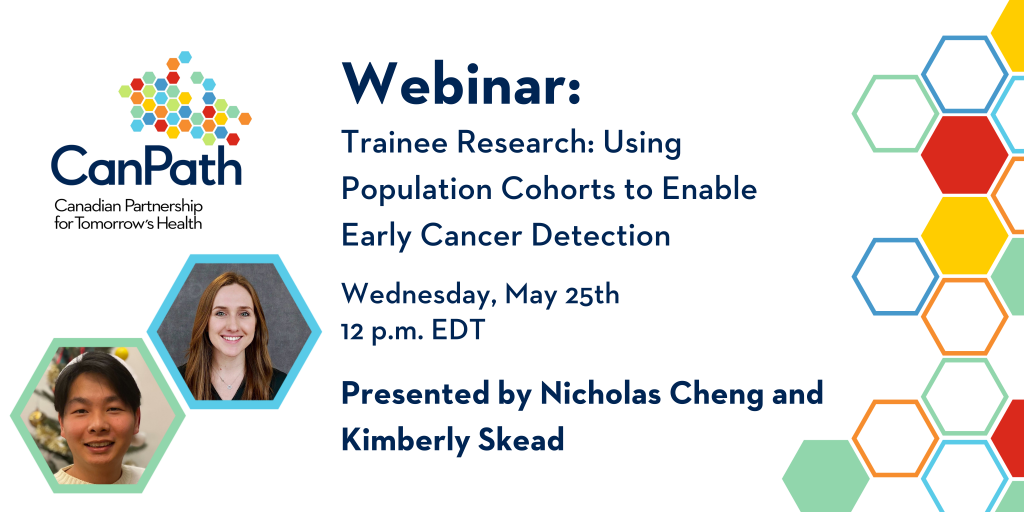- Location
- https://us02web.zoom.us/webinar/register/WN_lilBFdIVT8SzcQOm_EIh7A
- Series/Type
- DLSPH Event
- Dates
- May 25, 2022 from 12:00pm to 1:00pm
Links
Personalized medicine holds tremendous potential to improve patient care through the tailoring of medical interventions to an individual’s unique genetic makeup and life history. One of the most exciting applications of personalized medicine is the potential to identify people at risk of developing disease years before they are in a doctor’s office needing treatment. As CanPath follows people over decades, some participants who provided a biosample at the time of study enrollment will later develop a disease. Using biologic samples collected before the onset or detection of a disease, researchers can look for early genetic and molecular markers that suggest whether someone might be at a greater risk of disease, thus enabling a novel window of opportunity for earlier diagnoses and more targeted interventions.
CanPath is being used by researchers across Canada to understand the etiology of cancer years prior to clinical diagnosis. In this webinar, two Ontario-based trainees will illustrate how CanPath data and biologics, coupled with linked clinical outcomes can be used to identify biological signatures associated with increased cancer risk and, subsequently, develop novel early diagnostic tools able to identify cancer years prior to clinical onset.
Nicholas Cheng will provide an overview of his study on identifying early cancer biomarkers in pre-diagnosis blood samples collected from CanPath participants. He will demonstrate how we can utilize blood signatures to detect breast, prostate and pancreatic cancers years prior to clinical detection using cfDNA methylation profiles.
Kimberly Skead will provide an overview of her work studying how the interacting evolutionary pressures acting on somatic mutations in blood can be used to predict progression to blood cancer in large population cohorts such as the European Investigation into Cancer and Nutrition study and the Canadian Partnership for Tomorrow’s Health project.
